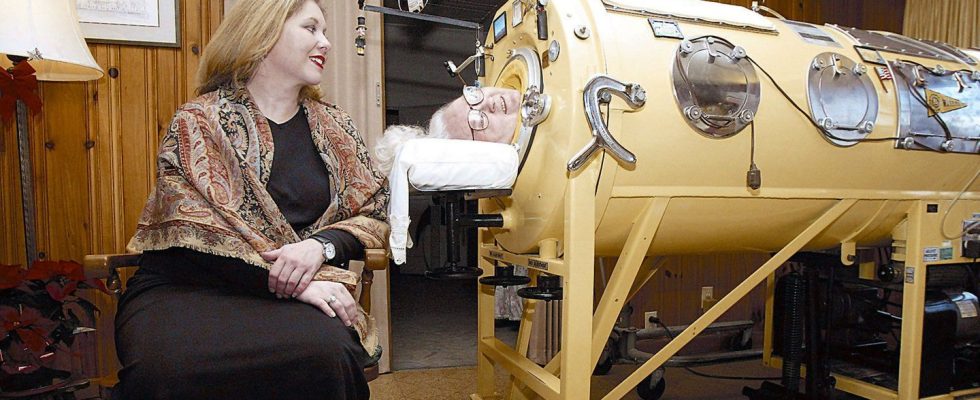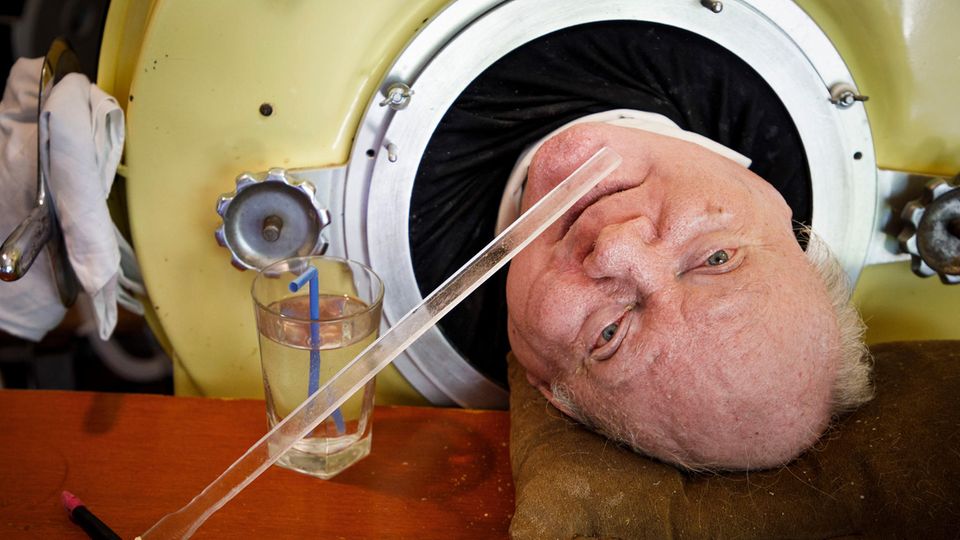medicine
The Iron Lung – a steel coffin that saves lives
Martha Mason also lived in an iron lung for decades – here in 2009 while visiting a friend
© EPA/Wake Forest University / DPA
Polio patient Paul Alexander, probably the last person who was dependent on an iron lung, died. But how exactly does it work?
Paul Alexander saw people die despite iron lungs. Especially in 1952, when polio was raging in the USA and children in the hospital were losing the fight for their lives despite the monstrous equipment. More than 70 years later, he recently died – not of polio, but of Corona. Nevertheless, he owed decades of his life to his iron lung.
The iron lung, first used in 1928, was the first large-scale clinical device that allowed mechanical ventilation of a person. But how does the device work that prevents people with paralyzed diaphragms from breathing?
The patient’s body lies in a cylinder up to the neck, sealed airtight; the head stays outside. Negative pressure is created inside the tube so that the outside air penetrates through the patient’s nose and mouth into the lungs; then alternately an overpressure, which leads to exhalation.
Iron lungs have been saving polio patients since 1928
The steel colossi experience their finest hour in the fight for patients suffering from polio. The viral disease leads to paralysis of the muscles and sometimes to the cessation of breathing. The device developed by Philip Drinker was used for the first time at the Boston Children’s Hospital in 1928: an eight-year-old girl suffering from polio and already in a coma could be resuscitated within minutes.
Medicine history
Vaginal spreaders and bone levers – this is how doctors operated in ancient Rome
In 1929 the Iron Lung was presented to the public. Some patients use it only temporarily, some overnight, others constantly.
Decades in the iron lung
The American Martha Mason spent six decades in an iron lung until she died in 2009. There have long been other methods, but she has gotten used to the prison that saved her as an eleven-year-old – and held her for a lifetime.
Paul Alexander reported similarly: When medical alternatives appear, he has been living in the device for decades. He no longer wants to leave his familiar life. “The iron lung belongs to me,” he says the “Süddeutsche Zeitung Magazine”. “She is my body.” He has now left at the age of 78.
Sources:“GEO”, “Süddeutsche Zeitung Magazine”.


